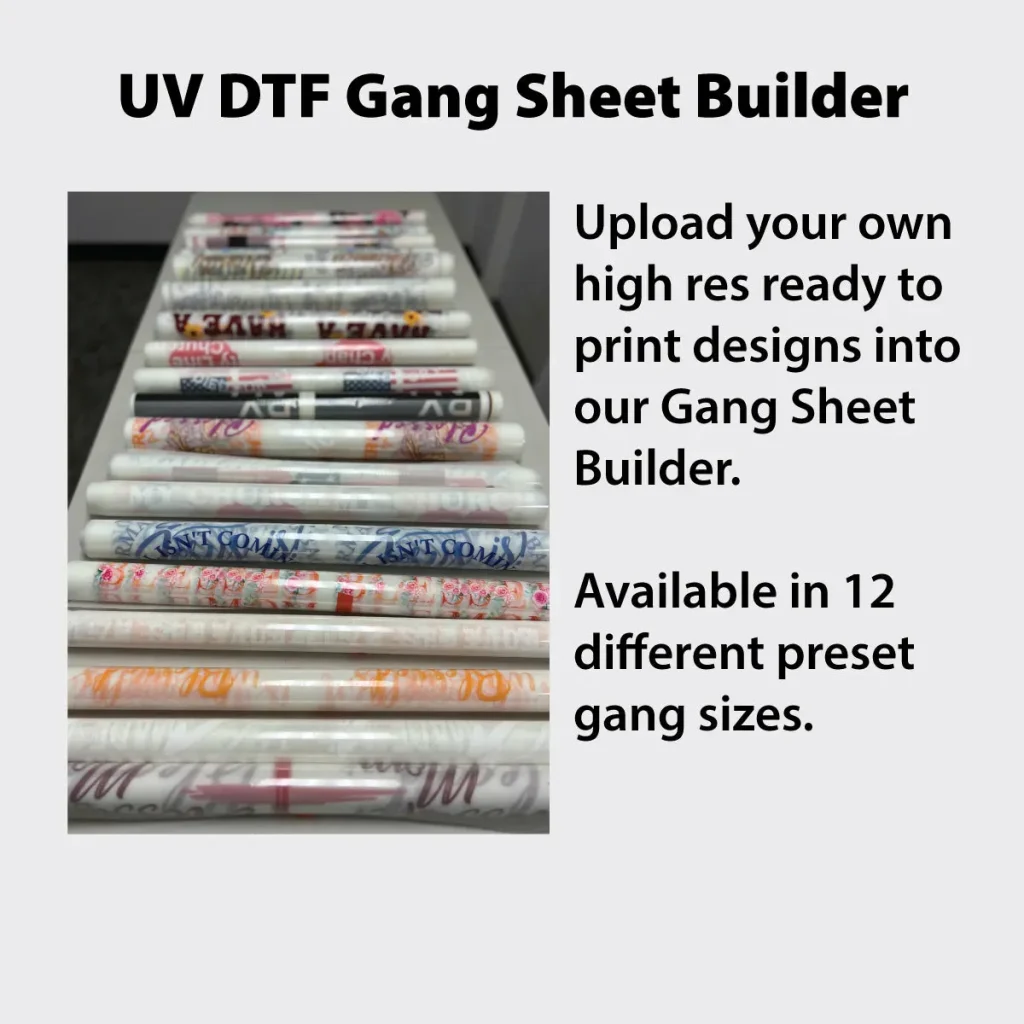In the fast-paced world of print production, a well-designed UV DTF gangsheet builder can redefine throughput by orchestrating how multiple designs fit on a single sheet, minimizing dead space, reducing errors from manual tiling, and safeguarding margins, bleed, and substrate variability across production runs. This approach aligns with UV DTF gangsheet printing workflows and supports DTF throughput optimization, helping shops move more work through the line with fewer manual steps, clearer templates, tighter color control, and smoother changeovers. By automating layout decisions, color management, substrate handling, and printer calibration, the system enhances DTF workflow efficiency and reduces the risk of misalignment that slows critical runs, enabling operators to plan more lines per shift while tracking material usage in real time. Industry case studies demonstrate that teams deploying this kind of tool realize a documented DTF printing case study of higher output, better consistency, and improved UV printer productivity, while also cutting setup times and waste and delivering more repeatable results. Ultimately, the combination of automation, standardization, and real-time feedback gives designers and operators a more predictable production schedule and a competitive edge in fast-turn campaigns, enabling teams expanding into new markets to scale capacity and maintain reliability across multiple shifts and lines.
Seen through LS I-inspired terminology, the core idea is automatic sheet tiling that maximizes print area while respecting ink bleed, substrate variance, and the printer’s bed constraints. Alternative terms such as ‘UV-curable digital transfer layout automation’ or ‘multi-design gang-sheet optimization’ capture the same value without repeating the exact product name. This reframing helps content creators and engineers connect the concept to broader workflows like color management, waste reduction, and throughput gains. In practice, teams talk about streamlining setup, template-driven production, and scalable productivity, all of which map cleanly to the benefits described in the introduction.
Frequently Asked Questions
How does the UV DTF gangsheet builder enable DTF throughput optimization on UV printers?
The UV DTF gangsheet builder automates the arrangement of multiple designs on a single sheet, reducing blank space and setup time to boost throughput optimization. In a pilot example, sheets per hour rose about 30–40%, while setup time dropped roughly 35%, thanks to printer bed size and margin awareness, ink bleed considerations, and integrated color workflow for UV DTF printing.
What is UV DTF gangsheet printing and how does a UV DTF gangsheet builder improve it?
UV DTF gangsheet printing involves placing several designs on one UV DTF sheet. A gangsheet builder optimizes tiling patterns, substrate type handling, and RIP-driven color management, leading to more efficient layouts, less waste, and more consistent results across multiple designs on the same sheet.
How does the UV DTF gangsheet builder boost DTF workflow efficiency and color fidelity?
By automating layout planning, providing reusable templates, and integrating RIP-driven color management, the builder improves DTF workflow efficiency and color fidelity. Operators benefit from standardized templates, faster training, and uniform color output across panels on gang sheets, reducing reprints and color variance.
What does the DTF printing case study reveal about adopting a UV DTF gangsheet builder?
The case study shows a mid-sized shop achieving meaningful gains after implementing a UV DTF gangsheet builder: increased sheets per hour, reduced setup time, less waste, improved color consistency, and a scalable workflow that enhances UV printer productivity and overall DTF throughput optimization.
What are the key steps to implement a UV DTF gangsheet builder from pilot to production?
Follow three phases: pilot viability to confirm sheet fit and no ink bleed; phase two with templates and presets for common job types; and full production with color calibration, proofing, and automated job tracking. Key steps include inventorying repeatable jobs, creating templates, calibrating color management, running a pilot batch, and training operators on the builder’s outputs.
What best practices maximize UV printer productivity when using a UV DTF gangsheet builder?
Focus on repeatable jobs with templates, invest in upfront color management and substrate profiling, calibrate for substrates, pilot thoroughly before scaling, train operators on template reuse, and continuously monitor metrics such as sheets per hour, setup time, waste, and defect rates to justify further investments in UV printer productivity.
| Aspect |
|---|
| Challenge |
| The Solution |
| What Makes It Effective |
| Implementation Phases |
| Key Rollout Steps |
| Results / Throughput Gains |
| Best Practices & Lessons |
| Rationale Behind Gains |
Summary
Conclusion



